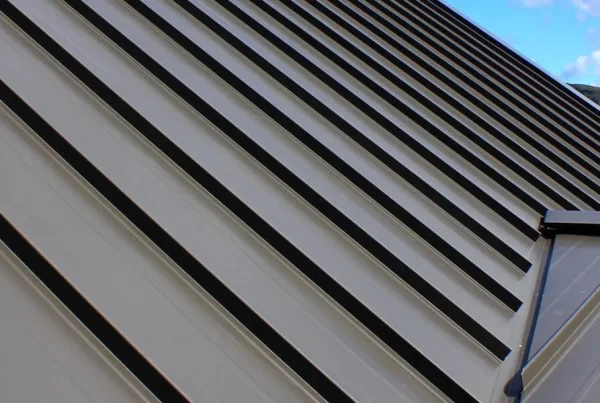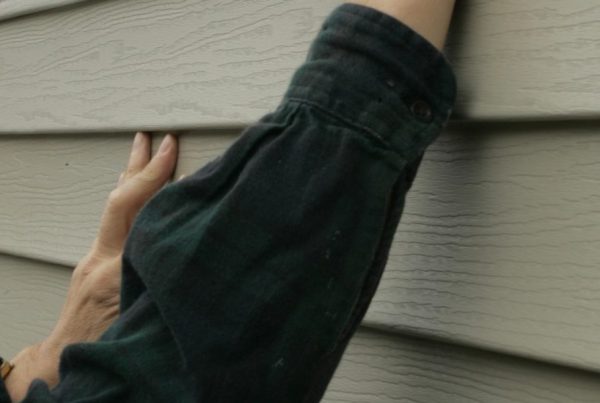A roof does not only serve as an ornament or a finishing touch to a house, even though it is often the highest part of the house but also a shield to Life and properties beneath it. And for those residents who need to know how long they have with their residential roof is crucial since this forms the external protective barrier of the house. Your roof plays an essential role as it helps protect the house from the rain and snowy weather, acts as a barrier against dangerous UV radiation and strong winds.
Nonetheless, the suitability of a roofing material does not solely define the lifespan of the roof; several factors somewhat participate in it. The presence of warranty, durability, type of roof and its quality, climate change, and quality of installation and maintenance are factors that determine the lifespan of a roof. By exploring these aspects and having a better perspective on what may influence roof longevity, people will be able to better understand and act on their roof’s maintenance, repair or replacement needs to better protect their homes during future hailstorms or any other other severe weather event.
Core Factors Affecting Roof Lifespan
Several core factors influence the longevity of your residential roof, each playing a significant role in determining its durability and lifespan.
A. Roofing Material:
Selecting the right roofing materials is an important factor that should be considered in order to have a lasting roofing solution. Some of the common roofing options include Shingle roofing where materials like asphalt shingles, metal roofing, tile roofing, and slate roofing are a plan. Apart from slate and tile roofing, the most widely used is the asphalt shingle roofing, as they can last for between fifteen to thirty years. On the downside, metal roofing is very long lasting and has a lifespan of 40 – 70 years giving it that durability it comes with a very high cost. Clay and concrete tile roofing systems can last 50-100 years, adding curb appeal and a high durability to homes that use tile roofing systems. On the opposite, slate roofing is one of the most durably with a lifespan of 75 to 100+ years and is considerably as its cost can range high.
B. Climate and Weather Conditions:
Understanding the climatic difference of your area and the general weather conditions greatly influence the durability of the roof. Some of the weather conditions like temperature changes, heavy rainfall or snow, and gusty winds pose a threat to roofing materials. Areas that experience extreme weather changes or are characterized by stormy weather may lead to rapid degradation of the roof while regions that experience moderate weather conditions may favorably address the roof’s overall lifespan.
C. Sun Exposure:
Another factor that can reduce roof lifespan is exposure to the sun, especially where the intensity is high, such as in arid areas. Ultra violet light rays are known to cause premature wearing on roofs and this results in cracking, fading, and general deterioration of roofing materials. Some materials like some form of metal roofing or special coatings would have better UV damage protection, hence they are likely to last longer.
D. Roof Pitch/Slope:
Your roof slope determines the manner in which it is able to shed water or any debris that might be on it. This means that a steeper slope will help the water drain off faster, thus minimizing chances of water remaining on the roof and causing damage. Moreover, slope roofing is not easily cluttered by debris and this greatly reduces the chances of getting through fallen branches or leaves. On the other hand, buildings with flat or low-sloped roofs might be more vulnerable to water-related issues and accumulation of debris, which can reduce the lifespan of the roof if they are not effectively managed.
These core factors are important in any homeowner desiring the longevity of his or her residential roofs. Understanding the role of roofing types, climate change, sun exposure, and roof slope, homeowners can make right decisions regarding maintenance, repair, and replacement to provide roof durability and maintain its health.
Additional Factors to Consider
Beyond the core factors discussed earlier, several additional considerations play a vital role in determining the lifespan and durability of your residential roof.
Proper Ventilation:
It is important that the roof is well ventilated to support its health and durability. Proper ventilation enables reduction of moisture accumulation within the attic that results in mold formation, decay of wood, and damage on the roof. Ventilation also plays the role of moderating attic temperatures to avoid damaging the roofing systems and shingles. Soffits and vents are important in ventilation by circulating air throughout the attic to avoid problems that affect the roof.
Regular Maintenance and Inspections:
Servicing is very important as it will help in early detection and possible prevention of future problems that may be expensive to solve. Regular maintenance including clearing of gutters, clearing of debris and visual check will ensure that your roof is always in the best condition. Homeowners must ensure that they pay attention to small problems as they occur so that they do not worsen and cause extensive damage on the roofs. It is recommended to call a professional at least once a year to identify potential issues that may have gone unnoticed and to check that the roof is in good condition.
Quality of Installation:
It has been established that the quality of roof installation is an important factor in the longevity and efficiency of the roof. Roofing materials should be installed correctly by experts since initial installation has a crucial role to play in the durability of the roofing materials. The following are some of the common problems that result from poor installation practices and they include; It is thus advisable to consider quality installation when one is either installing a new roof, or replacing the current one since it might lead to expensive repairs as well as early replacement.
Conclusion
Learning about the life expectancy of the residential roofing and the elements impacting the lifespan of the roof is critical in sustaining the overall health and structure of your house. In this blog post, I have shared some important aspects that help define the lifespan of your roof and its ability to stand up for various challenges.
However, one of the most important aspects that need to be paid attention to is the type of roof that is to be installed. Irrespective of the material used, asphalt shingles, metal or even tile or slate roofing has its own advantages and disadvantages particularly in terms of durability, cost and lifespan. Some of the other important factors that you should also consider includes the climatic conditions of your area, as factors such as high temperatures, precipitation and wind can also affect your roofing.
This means there are several factors like the climate and sun exposure that affect the durability of roofing materials. Further, the pitch or slope of the roof dictates how well it will drain water and other debris in a given environment and consequently its longevity.
More to these core factors there are other conditions such as ventilation, maintenance and installation plays a significant role in increasing the life span of the roof. Proper ventilation in the attic also helps in avoiding trapped moisture and heat-related damages, and daily maintenance practices and professional diagnostics can help spot early stages of development of severe problems. There is also the need to hire proper professionals in installing the roof to ensure that the roof gets to perform to its purpose and also get to last for a long time.
Whether it is choosing the right material for your roof or planning the way and mode on how to maintain it, then you need to ensure that you consider these aspects keenly. It will help you to make the right decisions from the start that will reduce your time, money, as well as stress later. Please bear in mind that roofs are an investment when it comes to protecting and increasing the value of a home; therefore, you should take important measures required to protect the roof from developing serious problems in the long run.
If you’re unsure about your roof’s best course of action, don’t hesitate to consult a professional roofer. They can provide personalized advice based on your specific situation and help you develop a plan to ensure your roof remains in optimal condition for years. With proper care and attention, you can enjoy peace of mind knowing that your residential roof will continue to provide reliable protection for you and your family.





